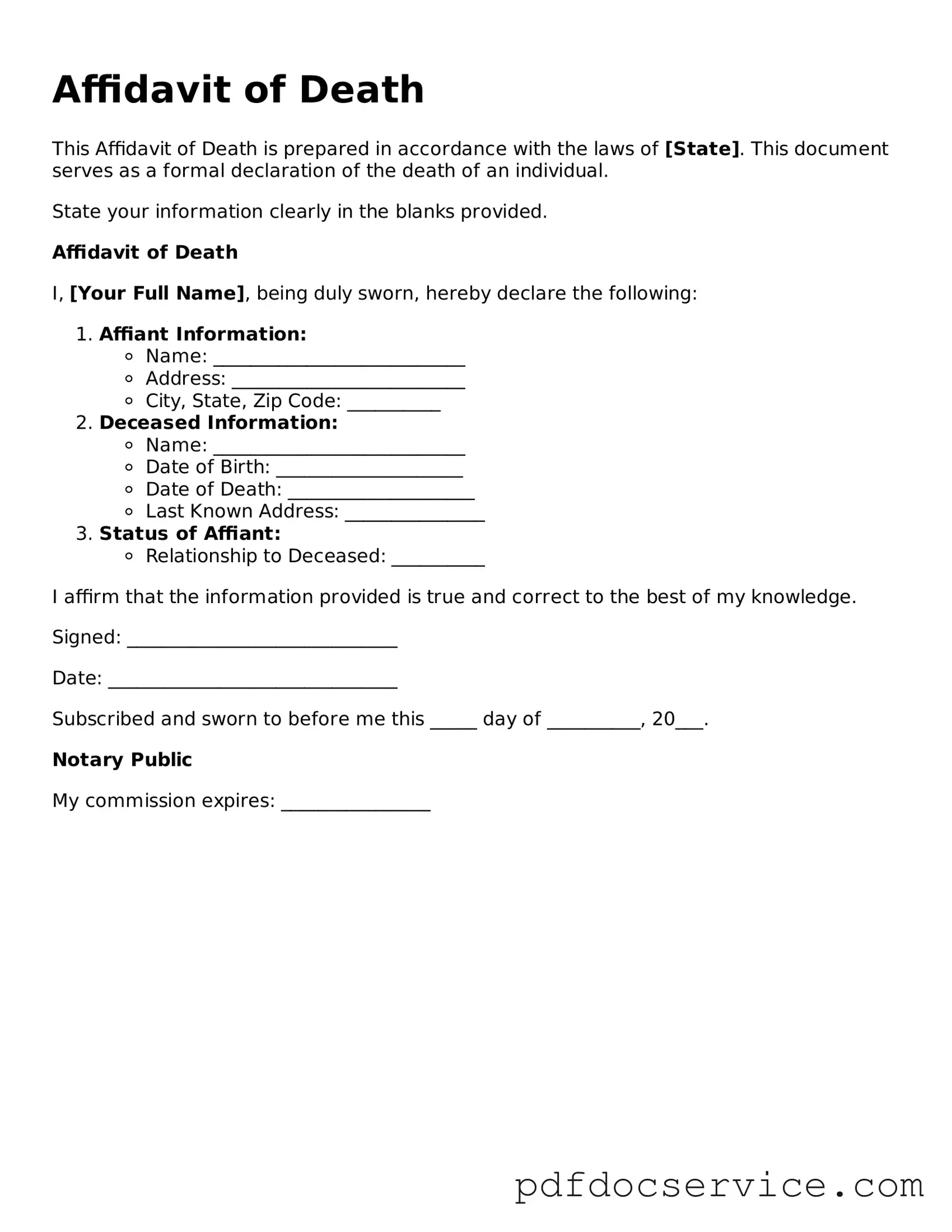What is an Affidavit of Death?
An Affidavit of Death is a legal document used to formally declare that an individual has passed away. This document is often necessary for settling estates, transferring property, or addressing financial matters related to the deceased. It serves as a sworn statement that provides proof of death, typically accompanied by a death certificate.
Who can file an Affidavit of Death?
Generally, any interested party can file an Affidavit of Death. This may include family members, executors of the estate, or other individuals who have a legal interest in the affairs of the deceased. It is important for the person filing to have relevant information about the deceased and the circumstances of their death.
To complete an Affidavit of Death, the following information is typically required:
-
The full name of the deceased
-
The date of death
-
The place of death
-
The relationship of the affiant (the person completing the affidavit) to the deceased
-
Any additional relevant details, such as the deceased's Social Security number or last known address
Is a death certificate necessary when filing?
Yes, a death certificate is usually required when filing an Affidavit of Death. The death certificate serves as official proof of death and supports the claims made in the affidavit. It is advisable to attach a certified copy of the death certificate to the affidavit when submitting it.
Where should the Affidavit of Death be filed?
The Affidavit of Death should be filed in the appropriate jurisdiction, which may vary based on the deceased’s residence or the location of their assets. Common places to file include the local probate court or the county clerk's office. Consult local regulations to ensure proper filing.
Can an Affidavit of Death be contested?
Yes, an Affidavit of Death can potentially be contested. Interested parties may dispute the validity of the affidavit or the circumstances of the death. If there are concerns about the legitimacy of the document or the accuracy of the information provided, it may lead to legal challenges.
What happens after filing the Affidavit of Death?
After the Affidavit of Death is filed, it becomes part of the public record. It may be used to facilitate the transfer of assets, settle debts, or initiate probate proceedings. The next steps will depend on the specific circumstances of the deceased's estate and the actions of the individuals involved.
Are there any fees associated with filing an Affidavit of Death?
Yes, there may be fees associated with filing an Affidavit of Death. These fees can vary by jurisdiction and may include filing fees charged by the court or clerk's office. It is advisable to check with the relevant office to determine the exact costs involved.
Can I get help with completing the Affidavit of Death?
Yes, assistance is available for completing the Affidavit of Death. Legal professionals, such as attorneys specializing in estate planning or probate law, can provide guidance. Additionally, many local courts or legal aid organizations may offer resources or templates to help individuals complete the form accurately.
